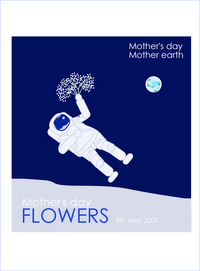US (CT): UConn professor earns income licensing plants that fight climate change
UConn horticulture professor Mark Brand grew up in Storrs, which is surrounded by flourishing flower fields and native shrubs. They were a unique breed of "classmates" who planted perennial seeds in his young mind that would later inspire his future.
Today, Brand's lab at UConn has licensed 27 plants, 33 royalty-generating cultivars, 16 plant patents, 33 new plant introductions, and three registered trademarks over the last two decades. Brand has built a 20-year relationship working with UConn's Technology Commercialization Services (TCS), which helped him license many of his breeds to prominent branding programs including Proven Winners, First Editions, Better Homes & Gardens, Ball Horticulture, and Walmart.
Brand, a UConn legacy whose father was an associate dean at the College of Agriculture, Health, and Natural Resources, remembers the "watershed moment" when his first plant, an ornamental grass known as Ruby Ribbons, was patented and then licensed.
"At the time ornamental grasses were the in thing in landscape plants, they were relatively new. So Ruby Ribbons was patented and licensed by Ball Horticulture, which was very big for us and an international entity. That was a watershed moment where UConn Technology Commercialization realized, oh this might make sense to go down this road," Brand says. "I had a royalty stream of income coming in so I could continue my work. It opened up my ability to get my plants patented and licensed."
An element of breeding plants that Brand finds fascinating is conceptualizing an idea that may or may not work.
"When you grow the seedlings up it's like opening presents, you never know what you're going to get. You could bomb on everything and it doesn't work, and other times it's fascinating seeing what you get as plants grow, reach maturity, and start flowering," he says.
Brand often prefers growing woody plants such as shrubs, which requires patience as their growth cycle can take time. He appreciates their permanence, knowing that they grow and remain in the landscape for decades, which means they help with climate control, soil stabilization and production, ecosystem water balance, carbon uptake and storage, and biodiversity.
Licensing Plants that Fight Climate Change
Brand hopes to continue breeding and developing ornamental plants that are better equipped to tolerate increasing environmental stresses including drought or heat. He's also eager to grow more compact plants that work better in increasingly smaller residential yards and landscapes but can also provide solutions to issues such as invasiveness and support of pollinators.
"I'm trying to create plants that can replace a lot of the plants that we seem to be losing due to climate change, drought, heat, and insects and disease issues that are becoming worse under climate change conditions," he says.
Ash trees, for example, are one of many plants that he says people used 10 to 20 years ago but are vanishing from the landscape.
"They're just one of many. Many species don't seem to live as long as they used to because now they get a particular disease or insect problem, but in the past, you used to get them to grow to be a 50-foot tree. Now, they're only a 20-foot tree before they succumb," Brand says.
Going back to his roots as a teenage horticulturist, Brand remains laser-focused on growing native plant species.
Initially, he recalls native plants were a tough sell.
"The average person will still want an exotic hydrangea with big giant blue or pink flowers because some of the native plants on face value are less showy. At garden centers many people go for real glamy-looking plants," he says, noting that this is changing, and the native market has steadily been growing with more consumers shifting to these plants.
According to the U.S. Department of Agriculture (USDA), "native plants adapt to the local climate and soil conditions where they naturally occur. These important plant species provide nectar, pollen, and seeds that serve as food for native butterflies, insects, and other animals. Unlike natives, common horticultural plants do not provide energetic rewards for their visitors and often require insect pest control to survive… excessive carbon from the burning of fossil fuels contributes to global warming. Native plants sequester or remove carbon from the air. Native plants provide shelter and food for wildlife, promote biodiversity, and stewardship of our natural heritage."
The USDA also notes that native plants do not require mowing or fertilizers, have fewer pesticides, and can help reduce air pollution.
Brand's lab recently introduced the NativeStar series of improved native shrubs. His breeding approach focuses on creating new plants using ploidy manipulation, mutation breeding, and interspecific and intergeneric hybridization. Current plants he is creating include Pieris, Clethra, shrub dogwoods, and yellow rhododendrons.
The Brand Lab has developed a new fruit crop, which produces berries containing high levels of antioxidant anthocyanins and polyphenols. Brand also serves as co-principal investigator with his wife and fellow UConn horticulture professor, Jessica Lubell-Brand, on a project involving cannabis, industrial hemp, and repurposing hemp hurd for environmental benefits. Read more here.
"In a broad sense, pretty much everything that I've been breeding or developing has been to help promote and foster greater landscape plant use, which can only help when it comes to the condition of the climate," he says.
Source: uconn.edu
Publication date: Tue 23 Apr 2024
---自動翻訳---
米国(コネチカット州):ユニバーシティ大学の教授、気候変動と戦うプラントのライセンスで収入を得ている
ユニバーシティ大学の園芸学教授マーク ブランドは、豊かな花畑と自生の低木に囲まれたストーズで育ちました。彼らは、彼の幼い心に、後に彼の将来にインスピレーションを与える永遠の種を植えた、ユニークな種類の「クラスメイト」でした。
現在、UConn のブランド研究所は、過去 20 年間に 27 の植物、33 のロイヤルティ生成品種、16 の植物特許、33 の新しい植物の導入、および 3 つの登録商標のライセンスを取得しました。ブランドは、UConn の Technology Commercialization Services (TCS) と 20 年にわたる関係を築き、これにより、Proven Winners、First Editions、Better Homes & Gardens、Ball Horticulture、Walmart などの著名なブランド プログラムに多くの品種のライセンスを供与することができました。
農学・健康・天然資源大学の副学部長を父親に持つブランド氏は、大学の名士であり、彼の最初の植物であるルビーリボンとして知られる観賞用の草が特許を取得し、その後ライセンスを取得したときの「転機の瞬間」を覚えている。
「当時、観賞用の草が造園植物として主流であった当時、それらは比較的新しいものでした。そのため、ルビー リボンがボール ホーティカルチャー社によって特許およびライセンスを取得したことは、私たちにとって、そして国際的な企業にとって非常に大きなことでした。これは、UConn のテクノロジーが商業化される転機となりました。ああ、この道を進むのは理にかなっているかもしれないと気づいたのです」とブランドは言う。 「ロイヤリティ収入が入ってきたので、仕事を続けることができました。そのおかげで、自分の植物の特許やライセンスを取得できる可能性が広がりました。」
ブランドが植物育種の魅力を感じているのは、うまくいくかどうかわからないアイデアを概念化することです。
「苗木を育てるときは、プレゼントを開けるようなもので、何が手に入るかわかりません。すべてを爆撃することもできますが、うまくいきません。また、植物が成長し、成熟するにつれて何が得られるかを見るのが興味深い場合もありますそして開花し始めます」と彼は言います。
ブランドは低木などの木本植物の栽培を好むことが多いですが、成長サイクルには時間がかかるため忍耐が必要です。彼は、それらが何十年にもわたって成長し、景観の中に残り続けることを知っており、その永続性を高く評価しています。これは、それらが気候制御、土壌の安定化と生産、生態系の水のバランス、炭素の吸収と貯蔵、生物多様性に役立つことを意味します。
気候変動と戦う植物のライセンス
ブランドは、干ばつや暑さなどの環境ストレスの増加にさらに耐えられる観賞用植物の育種と開発を継続したいと考えています。彼はまた、ますます小さくなる住宅の庭や景観でより効果的に機能するだけでなく、侵入や花粉媒介者のサポートなどの問題の解決策も提供できる、よりコンパクトな植物の栽培にも熱心に取り組んでいます。
「私は、気候変動、干ばつ、暑さ、そして気候変動の状況下で悪化する昆虫や病気の問題によって、私たちが失いつつあると思われる多くの植物に取って代わることのできる植物を作ろうとしているのです」と彼は言う。
例えばトネリコの木は、10~20年前には人々が利用していたものの、風景から消えつつある多くの植物のうちの1つだと氏は言う。
「それらはたくさんある種のうちの一つにすぎません。今では特定の病気や昆虫に悩まされるため、多くの種が以前ほど長く生きられないようですが、昔は50歳まで成長することもありました」今では、枯れるまではわずか6フィートの木です」とブランドは言う。
ブランドは、10 代の園芸家としてのルーツに立ち返り、在来種の植物の栽培に焦点を当て続けています。
当初、在来植物は売り込みが難しかったと彼は回想する。
「一般の人は、大きな巨大な青やピンクの花が咲くエキゾチックなアジサイを求めるだろう。自生植物の中には、額面上あまり派手なものがないからだ。園芸センターでは、本物の派手な見た目の植物を求める人が多い」と彼は言う。変化しており、より多くの消費者がこれらの植物に移行するにつれて、ネイティブ市場は着実に成長しています。
米国農務省 (USDA) によると、「在来植物は、それらが自然に発生する地域の気候や土壌条件に適応します。これらの重要な植物種は、在来の蝶や昆虫などの餌となる花蜜、花粉、種子を提供します。在来植物とは異なり、一般的な園芸植物は訪問者にエネルギー的な報酬を与えず、生き残るために害虫駆除を必要とすることがよくあります。化石燃料の燃焼による過剰な炭素は、在来植物から炭素を隔離または除去する原因となります。野生動物に避難所と食料を提供し、生物多様性を促進し、自然遺産を管理します。」
USDAはまた、在来植物は草刈りや肥料を必要とせず、農薬の使用量も少なく、大気汚染の軽減に役立つ可能性があるとも指摘している。
ブランドの研究室は最近、改良された在来低木の NativeStar シリーズを導入しました。彼の育種アプローチは、倍数性操作、突然変異育種、種間および属間交配を使用して新しい植物を作成することに焦点を当てています。彼が現在作成している植物には、ピエリス、クレスラ、低木ハナミズキ、黄色のシャクナゲが含まれます。
ブランドラボは、抗酸化物質であるアントシアニンとポリフェノールを高レベルで含むベリーを生産する新しい果物作物を開発しました。ブランドはまた、大麻、産業用大麻、および環境利益のための大麻の粕の再利用に関するプロジェクトで、彼の妻で同じく大学の園芸教授であるジェシカ・ルーベル・ブランドとともに共同主任研究者を務めています。詳細はこちらをご覧ください。
「広い意味で、私が育種したり開発したことのほぼすべては、景観植物の利用を促進し促進するためのもので、それが役立つのは気候条件の場合だけです」と彼は言う。
出典: uconn.edu
発行日: 2024年4月23日(火)

